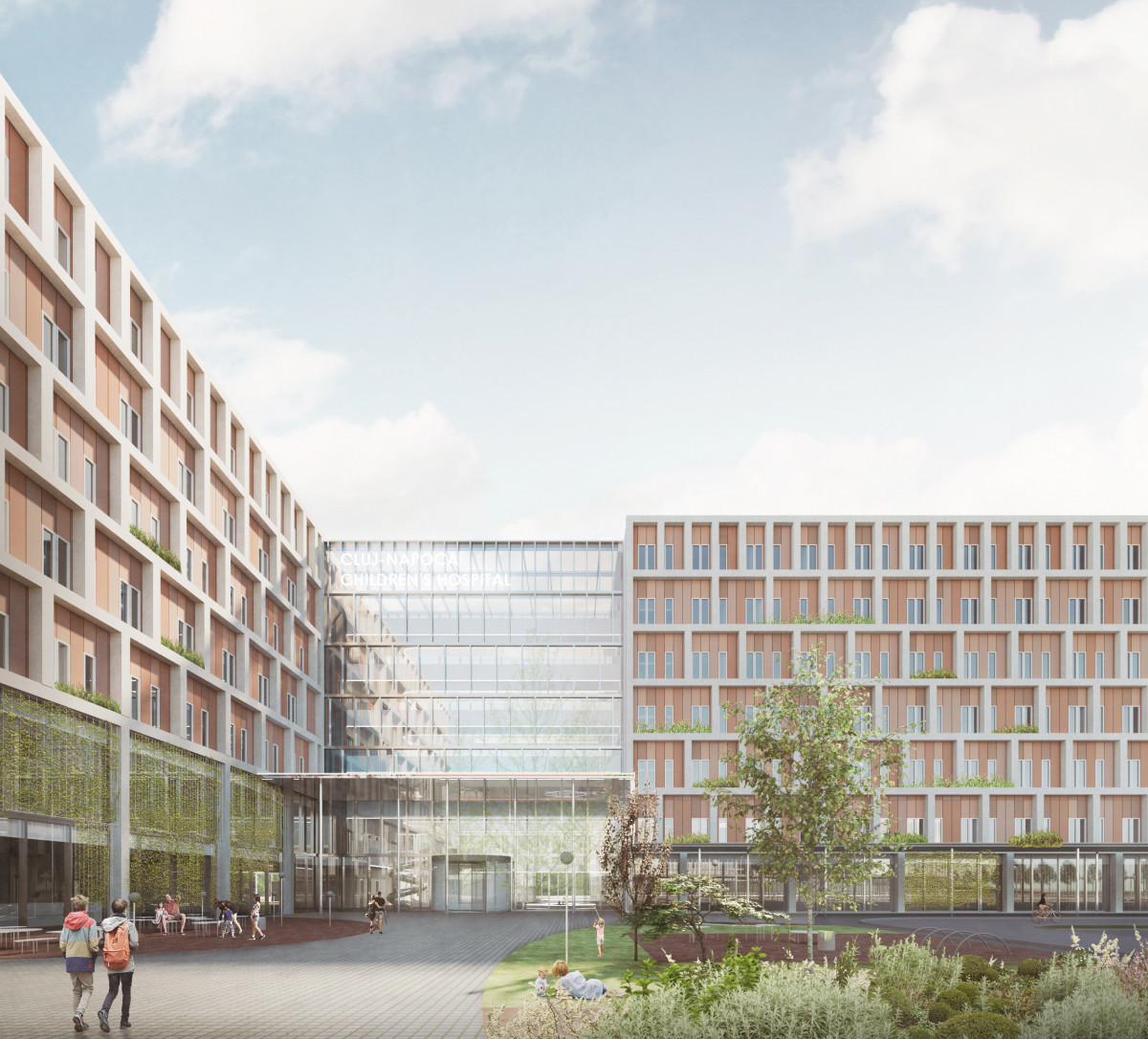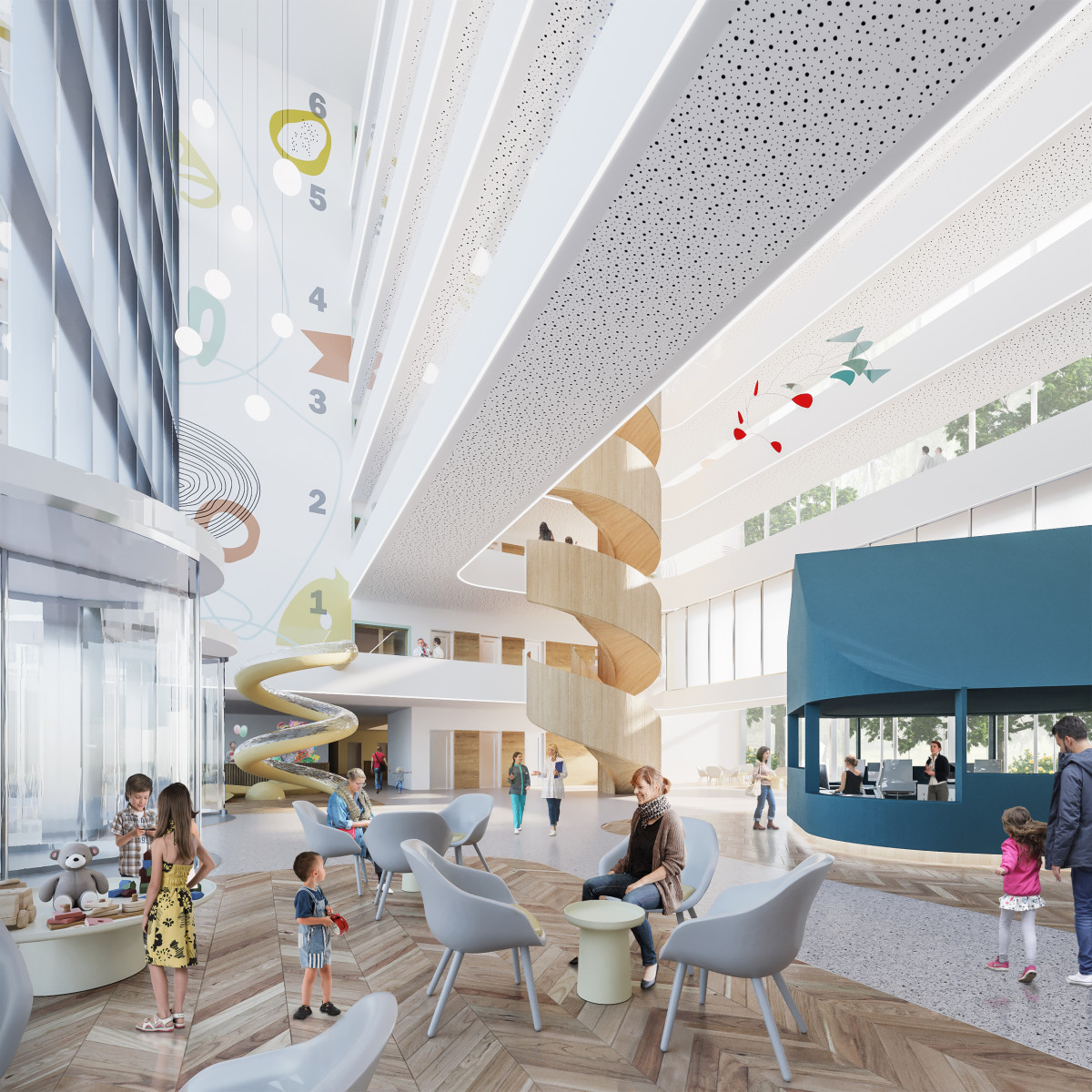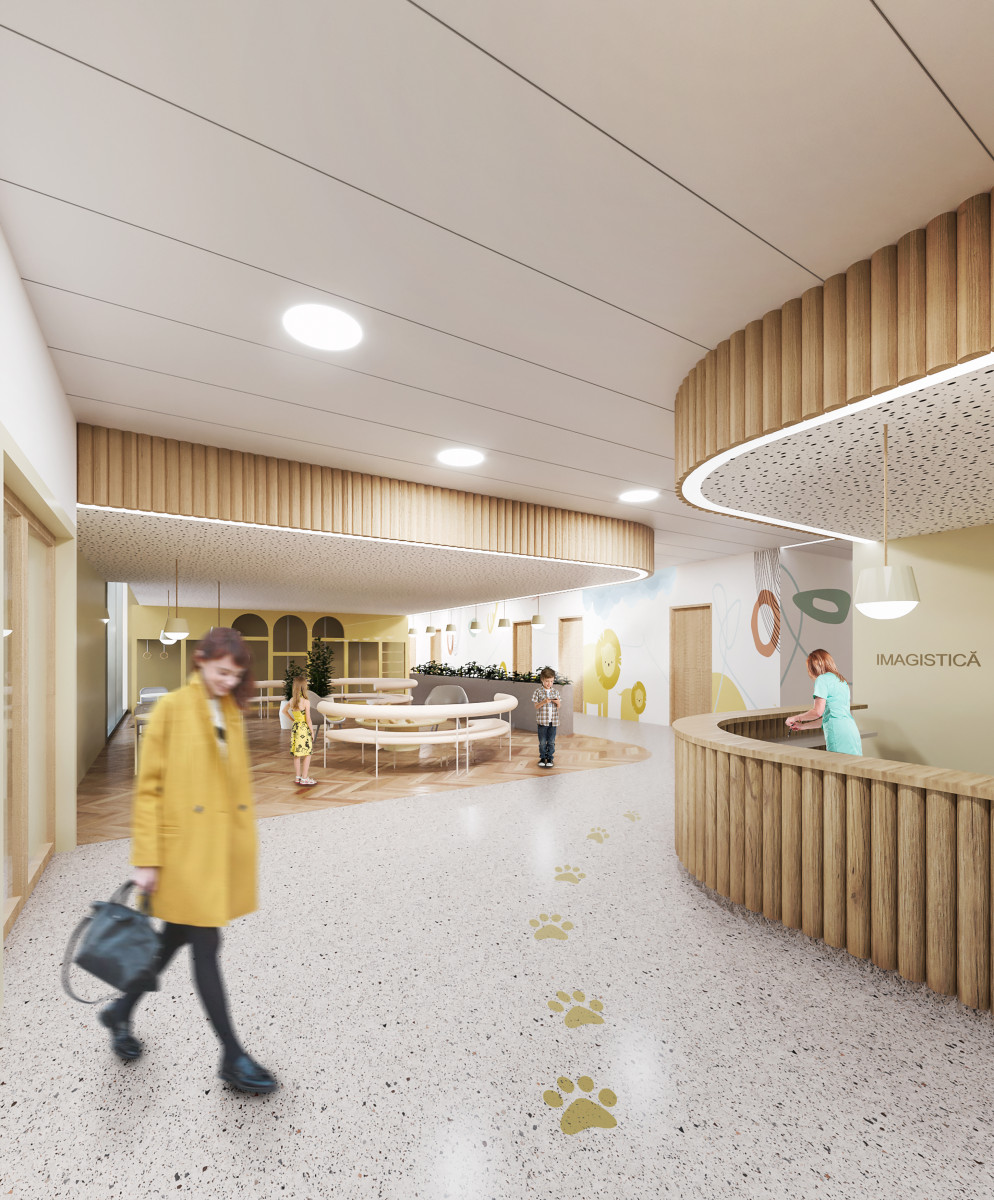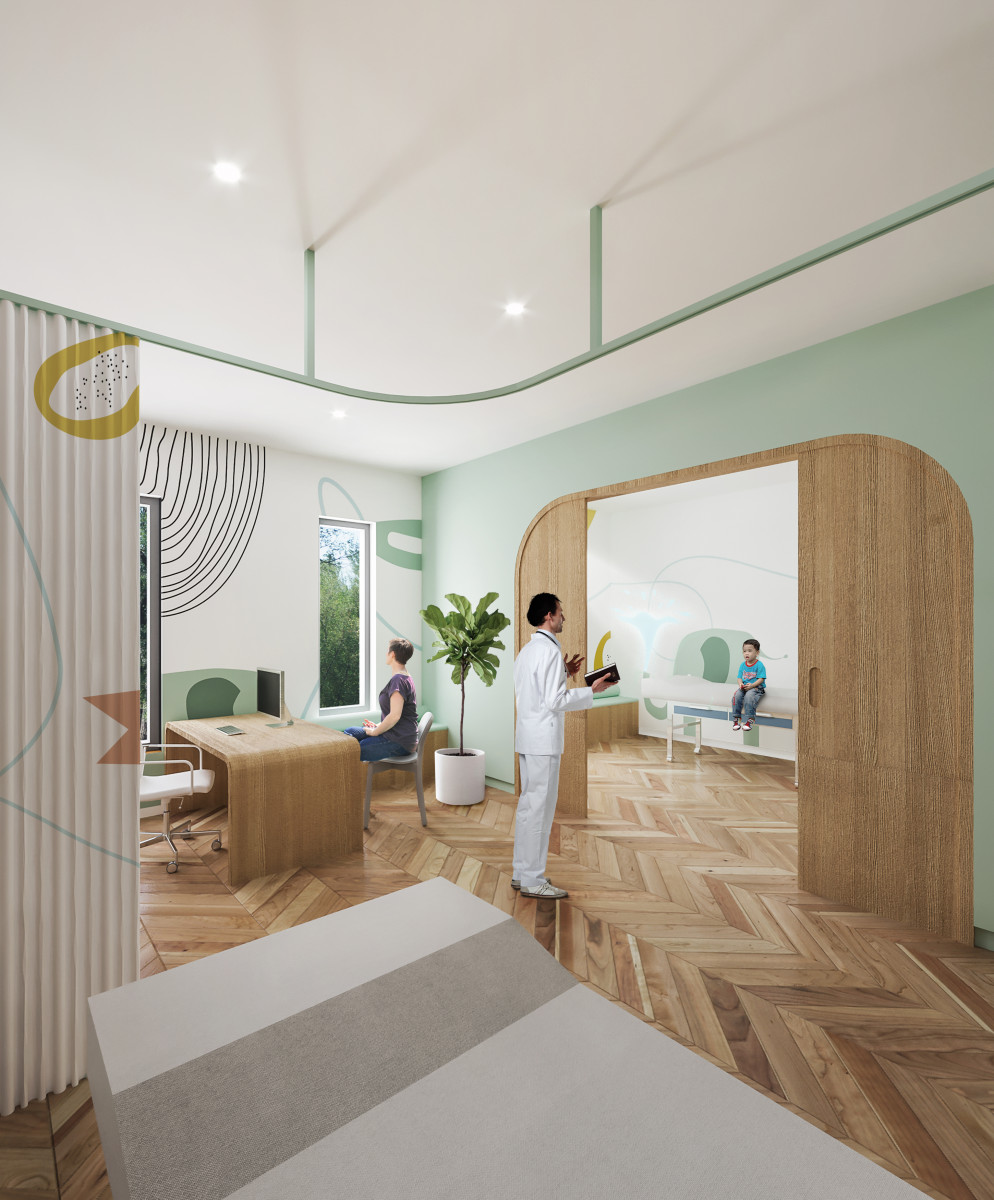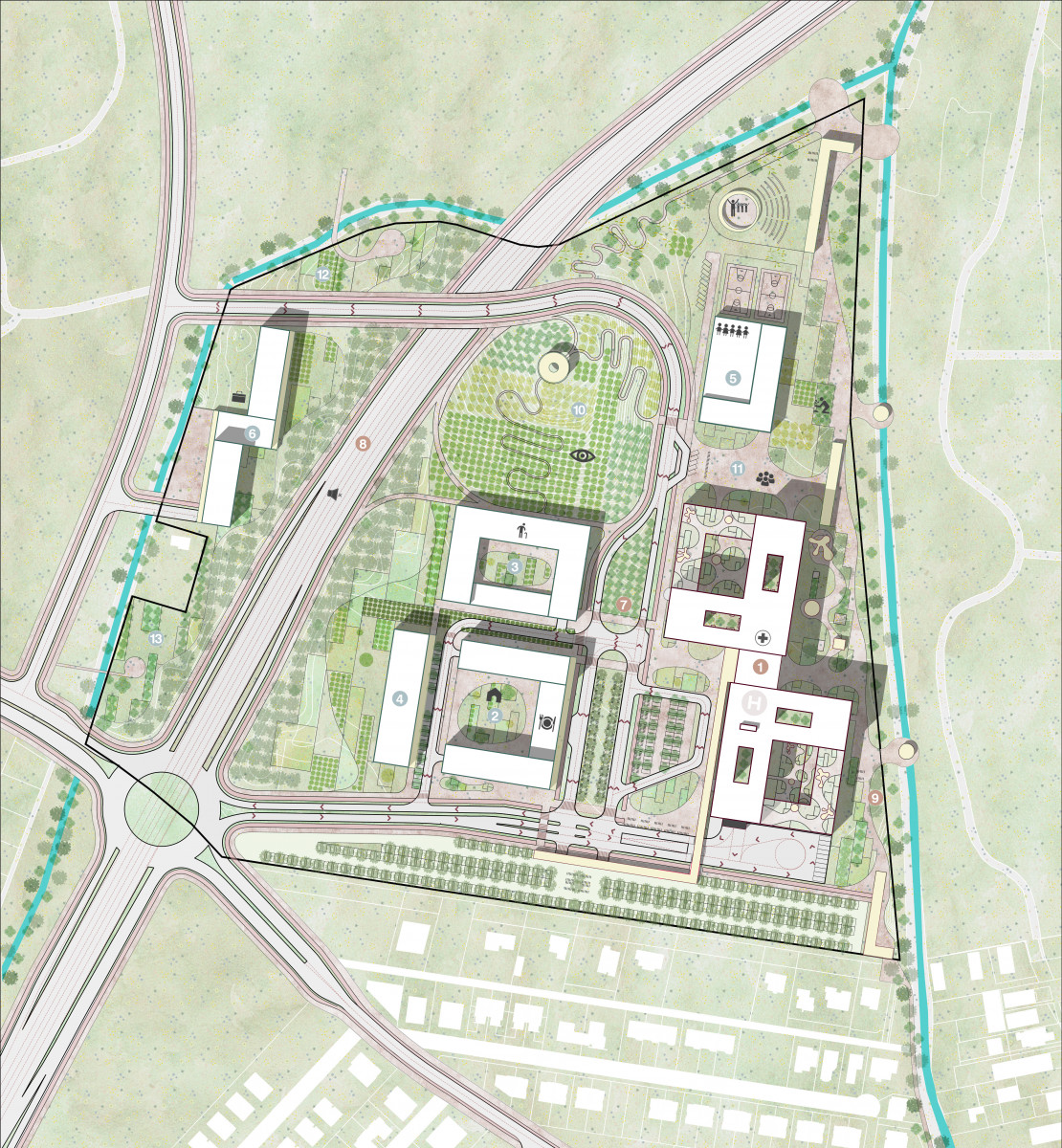The current Children’s Hospital of Cluj-Napoca in Romania, provides pediatric healthcare on a national scale. However, not only has the hospital difficulties to adapt to contemporary standards, it also operates in a pavilion system of eight different locations. This has a negative impact in the efficiency of the hospital services. To solve these issues and provide high standard healthcare, the city council organized a competition for the design of a new hospital in the outskirts of the city. The new building of 62.500 m² GFA would provide 510 hospitalization beds, as well as teaching and research facilities for the field of pediatrics. In addition to the hospital, participants also had to develop a masterplan for the total available site of 12,4 hectares. For this ambitious challenge, atelier PRO teamed up with Bucharest based office: CUMULUS.
Our proposal
The project intrinsically carries a multi-faceted challenge. On the one hand, it should be solved in an efficient and logical manner. On the other hand, it should provide a friendly and healing environment for its smallest patients, as well as a welcoming and supporting atmosphere for its workers.
Our answer to this call consists of several components. A volume with lower and higher parts infuses with the surrounding nature. Greenery present throughout the building creates a calming and pleasant environment for both patients and caregivers. A façade breaks the huge scale of the building in a playful manner. A double corridor structure minimizes the length and height of the construction. Finally, a soothing and creative interior design helps in distracting the children during their burdensome stay.
Site and Volume
The site is bordered by, at one side, the metropolitan beltway that cuts through the western part of the plot, and on the other side, by a beautiful tall hill covered with orchards. A green corridor runs along the eastern border of the site, along the hill. The placement of the hospital, its main access, and its shape determine a clear separation between public and private spaces. Towards the boulevard and beltway, a public and urban square is formed. While at the side of the hill and green corridor, the garden of the hospital enjoy beautiful views on the eastern fields.
General program organization
The main entrance, located in the middle atrium, connects both the boulevard and green corridor. It allows visitors to enter from both directions. Its central location makes it the heart of the building, allowing fast access to all functions of the hospital. The north plinth hosts more public and less medical functions, in close proximity to the hospital garden and public buildings. In the southern plinth, the more specialized and critical functions are housed. The wards, situated above this three-stories plinth, offer the children calm, privacy, and wonderful views.
The volume is punctuated by four main cores (including one for visitors) in the middle axis. They allow the different flows to take place with minimal crossing. The priority is to separate visitors, non-medical staff and outpatients, from the more medical and technical groups (medical staff and logistics).
Medical Wards
Wards represent more than 60% of the whole project and resemble each other. They constitute the most important part of the building to systematize. The double corridor system allows the isolation of selected rooms in case of contamination, and, more importantly, provides a wider wing with more rooms without compromising walking distances. Therefore, the wards are organized in a 60 beds-system, allowing a lot of flexibility for future down/up-sizing of departments. They are punctuated by patios where children and caregivers can find comfort. The glazed façade accommodates boxes where children can play and wave at each other from one department to another. An additional play area is added at the end of the corridors for children to gather and bond under the supervision of the nurses. There, everyone can enjoy outstanding views on the surroundings.
Interior Design
The neutral tones of the interior design and the large amount of daylight allow quick identification of the more contrasting elements, such as the main reception desk, central staircase, elevators, or waiting areas. The atrium hosts a real heaven for children: abundant greenery, play areas, interactive walls, organic-shaped furniture, colors and doodles, an easily recognizable reception desk shaped like a house, a mesmerizing spiral staircase, and even a slide! From there, the animal theme will guide them throughout their stay.
Facade
The compact form of our design and the scale of the program leads to another challenge: how to create a friendly and human-scaled façade?
The more public functions of the hospital are located on the ground and first floor, behind a very transparent curtain wall. This two-story plinth is a natural extension of the surrounding nature, with vines shading the glazed façade with the support of cables. For the more private, upper part of the facade, a simple concrete framework is applied. Its pattern is inspired by the existing agricultural fields. Plants are placed at window sill level, for the children and the caregivers to always be able to enjoy the greenery from their room. Finally, the fully glazed atrium accentuates the entrance and create a visual break in the volume.


